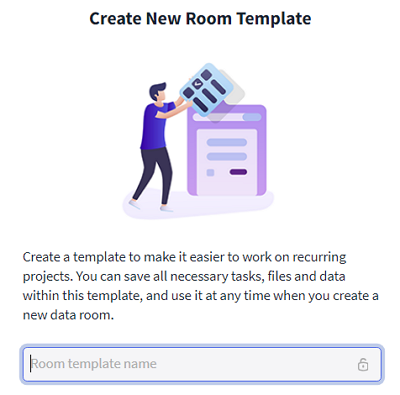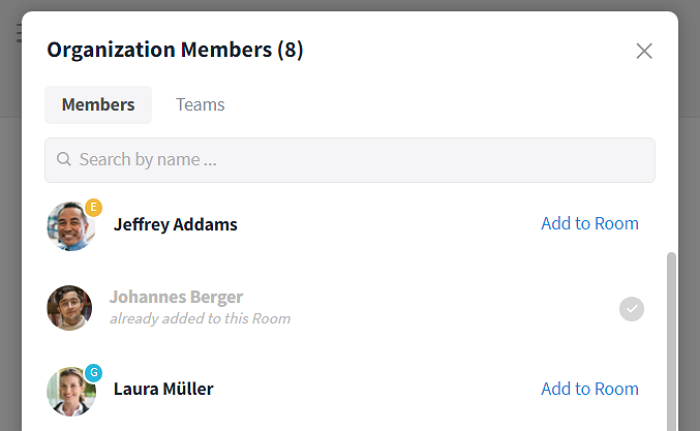New employees joining a company is an exciting phase for everyone involved. A smooth start is crucial for successful integration into the existing team as well as for long-term collaboration. Important questions such as: "How will the new colleague find their way around?", "How will they integrate into the team?" and "Have all the necessary formalities been completed?" need to be clarified quickly and efficiently.
A structured employee onboarding plan is of great benefit here. It not only contributes to a smooth workflow within the team, but also shows the new employee that their concerns are being taken seriously. Once established, this induction process can also be easily adopted and adapted for future new hires, which further increases efficiency.
Below you will not only find information on why an employee onboarding plan is helpful, but also how to create one and what it should contain.
What is an employee onboarding plan?
There is an onboarding process for new colleagues almost everywhere these days – sometimes it's better, sometimes it's not. However, if you think about how to welcome newcomers effectively and warmly in advance, you will not only optimize your own work processes, but also quickly integrate new employees to your company. A well thought-out employee onboarding plan for new hires is particularly helpful here.
Such a plan lists all the work steps that are important during the entire onboarding process. Tasks are clearly defined, responsible colleagues are assigned and sufficient time is scheduled. This enables new employees to quickly get to grips with their new area of responsibility and at the same time get to know the team and the corporate culture.
The advantages of an employee onboarding plan
- Structure and security in work routine
- Clearly defined targets and expectations
- Rapid increase in efficiency
- Continuous feedback
- Communication of appreciation and recognition
- Increased motivation and satisfaction
- Fostering corporate culture
What content should be included in an employee onboarding plan?
Roughly speaking, an employee onboarding plan is divided into three phases: Preboarding, Onboarding and Postboarding. These are the periods before, during and after a new employee joins the company. Depending on the phase, different priorities need to be considered.
Preboarding
Ideally, an employee onboarding plan already focuses on the time before the new employee's first day at work. The focus here is on preparing everything internally for the new colleague's start, as well as on meeting the newcomer when they begin.
- Clarify internal matters: All the necessary steps that need to be completed before a new employee joins the company (for example the preparation of the workplace or of the technical equipment) can be addressed in an employee onboarding plan for new employees.
- Inform employees and managers: Employees and supervisors who can take over the orientation process of the new team member can already prepare for the new collegues first day at work – especially if there is a buddy or mentor system in your company.
- Keep in touch with the new employee: It is helpful for both sides if the HR manager maintains (loose) contact with the new employee and is available to answer any questions.
Onboarding
Day X has arrived and the new employee is ready and waiting. Now it's time to implement the planning from the preboarding phase and guide the new colleague.
- Welcome and introduction: The first welcome lays the foundation for a successful working relationship. A small welcome gift and a tour of the company convey recognition and at the same time provide an introduction to the corporate culture and history.
- Workplace and colleagues: Getting to know your new colleagues is an exciting moment for new employees. A contact person from the team can provide real support in this situations. This mentor can make the introduction easier and helps the new team member to familiarize themselves with everyday work.
- Tasks and goals: It is helpful if new employees are assigned a few simple tasks or goals quite early on via the employee onboarding plan. This not only gives the new employee orientation, but also generates the good feeling of being needed in them.
Postboarding
It can take several months to successfully train a new employee. Here, too, an employee onbarding plan will help you not to lose sight of the big picture and to support and challenge the new hire in the best possible way.
- Training and further education: In many areas, you need specialist knowledge that must first be taught. These training courses must be scheduled promptly so that the new employee quickly acquires the necessary knowledge.
- Team building and events: Company events and the like offer an ideal opportunity for new employees to make contacts in the company beyond their own team and to integrate successfully.
- Discussions and evaluation: Regular feedback sessions with a manager are part of every onboarding phase. It is not just a matter of responding to wishes and questions or evaluating the new employee. A company should also actively request feedback in order to continuously improve its own processes.
How to create an employee onboarding plan?
An employee onboarding plan for new hires can of course be drawn up in the traditional way in paper form and given to all relevant people. However, comparability is lost and all too often the papers are already forgotten after a few days. Meanwhile, in many companies, an employee onboarding plan plan is created in Excel as an alternative to paper, but this is not only inefficient but also time-consuming. It may make more sense to use digital project management software such as Stackfield – especially if you are already using such software.
In project management software, a copyable template for a professional employee onboarding plan can be created in just a few steps. This can be used to generate your own room in which all relevant people have access and can communicate with each other. Tasks and deadlines can be created, distributed and provided with a corresponding time window.
In addition, all necessary documents can be collected in a project room so that they can be accessed at any time. Milestones clearly show which steps are to be taken by when. And once onboarding is complete, the project room can be archived centrally. This means that the entire process remains traceable – without mountains of paper.
Three practical tips for creating a successful employee onboarding plan in Stackfield
Project management software such as Stackfield offers you various options for simplifying and standardizing work processes. At the same time, they remain comprehensible and comparable for everyone involved. Here are three tips on how you can optimize your processes when creating an employee onboarding plan for new employees.
Create a template for an employee onboarding plan
It is a great help for everyone involved if your company has a template for an employee onboarding plan. The basic tasks that every new employee has are already predefined in this. This means you don't have to start the process from scratch for every new employee.

A template can be easily created and used as often as required.
In Stackfield, you can simply create such a template as a room template and – once created – copy it as often as you like. The sample room template, which can be used right from the start, can provide inspiration here. This means you only have to create a basic employee onboarding plan for new employees once. And if necessary, the template can also be edited at any time.
Preparing for the start of work in advance
There is a lot to do before a new employee starts at your company. With task cards on a Kanban board like the one in Stackfield, you not only have an overview of everything, but can also distribute the tasks to colleagues and employees straight away.

Sub-tasks can be created in a task.
To do this, you create a new task in a room (which you have generated from a room template, for example). You can then define subtasks in the task, such as setting up the laptop or organizing new furniture. These subtasks can be given a date and assigned to the relevant employees. They are informed about their tasks, can work on them and then tick it off. A glance at your to-do list is enough to see how far preparations have progressed and whether you are on schedule.
Make the induction process comprehensible
New employees have a lot on their plate at first. It is a great relief for them if all appointments, tasks and documents can be viewed in one place. If you use Stackfield, the new employee can also simply access the room created for them and view all work steps and important information there.

Employees can be assigned to each room individually.
To add a new employee to an existing room, all you have to do is invite them. Depending on what access the new employee should have, you can also create their own rights group if required. For example, it is possible to restrict their rights at the beginning. This way, not all tasks are displayed to them and they can be introduced gradually.
Conclusion: Getting started is easy with an employee onboarding plan
An employee onboarding plan helps you and your company, as well as the new employees, to keep the induction period efficient, clear and structured. This not only supports the new colleagues, but also the existing team.
It is also easy for new employees to track their progress during onboarding with an employee onboarding plan. Project management software can not only help you to create an employee onboarding plan, but also connect all new employees with the existing team.
Almost finished...Please click the link in the email and confirm your email adress to complete the subscription process.
Never miss a post. Get awesome insights in your inbox.